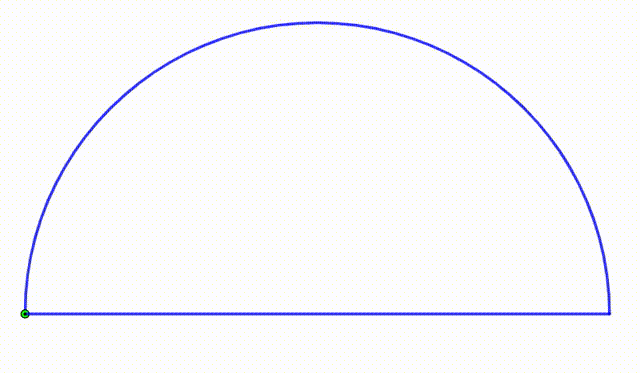Dynamic Geometry: P56
 The diagram shows a blue semicircle with radius
. The pink semicircle is internally tangent to the blue semicircle. It is growing and
shrinking so that its center is moving on the blue semicircle. The yellow circle is internally tangent to the blue semicircle and tangent to the pink semicircle. Finally the green circle is tangent to all three circles and semicircles. We use the center of the pink semicircle, each center of the yellow and green circles to draw a black triangle. When the ratio of the triangle’s area to its perimeter is equal to
, the
maximum
value of the ratio of the yellow circle's radius to the radius of the green circle can be expressed as
, where
and
are coprime positive integers. Find
.
The diagram shows a blue semicircle with radius
. The pink semicircle is internally tangent to the blue semicircle. It is growing and
shrinking so that its center is moving on the blue semicircle. The yellow circle is internally tangent to the blue semicircle and tangent to the pink semicircle. Finally the green circle is tangent to all three circles and semicircles. We use the center of the pink semicircle, each center of the yellow and green circles to draw a black triangle. When the ratio of the triangle’s area to its perimeter is equal to
, the
maximum
value of the ratio of the yellow circle's radius to the radius of the green circle can be expressed as
, where
and
are coprime positive integers. Find
.
The answer is 18.
This section requires Javascript.
You are seeing this because something didn't load right. We suggest you, (a) try
refreshing the page, (b) enabling javascript if it is disabled on your browser and,
finally, (c)
loading the
non-javascript version of this page
. We're sorry about the hassle.
We have:
Substituting r 1 with ( 1 − a ) and also y and r 2 with − 2 x 2 − 1 , will give the simultaneous equations enough information to get r 2 = − ( a − 2 ) 2 4 ( a 2 − a ) and r 3 = − 9 a 2 − 4 a + 4 4 ( a 2 − a )
The final step is noting that P e r i m e t e r A r e a = 2 ( r 1 + r 2 + r 3 ) ( r 1 + r 2 + r 2 ) ( r 1 r 2 r 3 ) = 2 1 r 1 + r 2 + r 3 r 1 r 2 r 3
With everything written as a function of a , P A = 1 2 7 1 2 ⟹ a = 5 3 ⟹ r 3 r 2 = 4 9 1 2 1 ⟹ p + q = 1 1 + 7